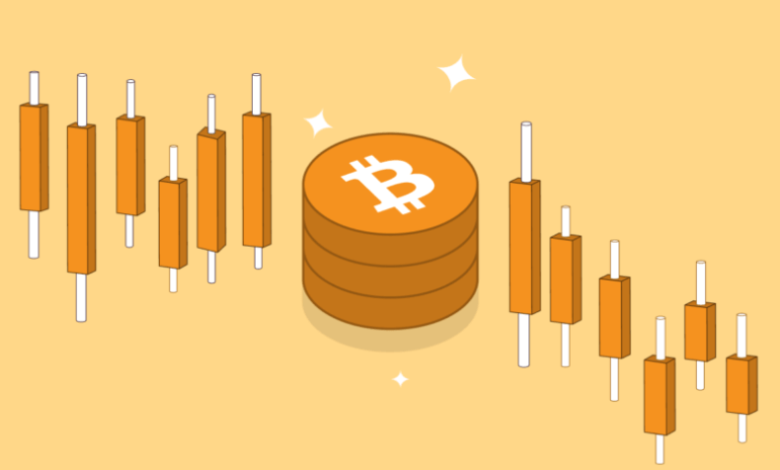Understanding BTC Price Movements: A Beginner’s Guide

Introduction
Bitcoin (BTC), the world’s first cryptocurrency, has captured the attention of traders, investors, and enthusiasts alike due to its potential for rapid price movements. Understanding the factors that influence these price changes is crucial for anyone looking to engage with Bitcoin trading or investing. Whether you’re new to the world of digital currencies or looking to refine your strategy, this guide will help you navigate the complex landscape of Bitcoin price movements.
What is Bitcoin?
Bitcoin is a decentralized digital currency created in 2009 by an anonymous figure or group of figures known as Satoshi Nakamoto. Unlike traditional currencies, Bitcoin operates without a central authority like a government or central bank. Its value is determined by market demand and supply, making it inherently volatile.
How BTC Price is Determined
Understanding how btc price is determined is essential for anyone looking to participate in its market. Unlike traditional assets such as stocks or bonds, Bitcoin doesn’t have intrinsic value backed by a physical asset. Instead, its price is determined by market dynamics — mainly supply and demand.
The Role of Supply and Demand
The most fundamental factor affecting Bitcoin’s price is its supply and demand. Bitcoin is finite, with a total supply capped at 21 million coins. This scarcity, combined with increasing demand, often causes the price to rise. Conversely, when demand decreases, the price falls.
Factors Influencing BTC Price Movements
Economic Trends, Government Regulations, and Market Sentiment
Bitcoin is influenced by a variety of factors, including global economic trends and government regulations. For instance, economic crises may push people toward Bitcoin as a hedge against traditional fiat currencies. On the other hand, government restrictions or favorable regulations can significantly impact Bitcoin’s price.
Market Sentiment
Market sentiment plays a significant role in Bitcoin’s price movements. If the general mood is optimistic, investors are more likely to buy, increasing the price. Conversely, negative sentiment can lead to mass sell-offs, driving the price down.
Technical Analysis for Beginners
For those new to Bitcoin, technical analysis might sound complicated, but it’s an essential tool for understanding price movements. By analyzing historical price charts, traders can identify patterns and make educated guesses about future price movements.
Price Charts
Price charts are essential for tracking Bitcoin’s movements over time. They can show various time frames, from minutes to months, and display key price levels.
Moving Averages
A simple moving average (SMA) is a tool used to smooth out price data and identify trends. Moving averages are helpful in recognizing the overall direction of Bitcoin’s price.
Support and Resistance Levels
Support refers to the price level at which Bitcoin tends to stop falling, while resistance is the price level at which it struggles to rise above. Identifying these levels can help traders make buy or sell decisions.
Fundamental Analysis in Bitcoin
While technical analysis focuses on price history, fundamental analysis is more about understanding the underlying factors that give Bitcoin its value.
Understanding Bitcoin’s Utility and Adoption
Bitcoin’s price is often influenced by its perceived utility. As more businesses and individuals adopt Bitcoin for transactions, its value may increase due to increased demand. Factors such as institutional adoption or acceptance by major financial platforms can also drive prices higher.
Impact of Global News on BTC Price
Bitcoin is highly sensitive to global news events. Whether it’s a government crackdown on cryptocurrencies, new financial regulations, or technological advancements, news events can send Bitcoin’s price on a rollercoaster ride.
How News Events Trigger Price Movements
Good news, such as Bitcoin being accepted as a form of payment by large companies, often drives the price up. On the other hand, bad news, like government crackdowns or technological failures, can lead to sharp price declines.
The Role of Speculation in Bitcoin Trading
Bitcoin’s price is not only influenced by fundamental factors but also by speculation. Many traders buy and sell Bitcoin based on short-term price movements, rather than its long-term utility or adoption. This can lead to sharp price fluctuations.
Why Traders’ Speculation Drives BTC Volatility
Speculators often trade Bitcoin in reaction to market rumors, news, and sentiment. As these traders enter and exit positions quickly, their actions can lead to significant price volatility.
BTC Price and Market Cycles
Like most financial markets, Bitcoin experiences different market cycles. These cycles can be broadly classified into four stages: accumulation, uptrend, distribution, and downtrend.
The Four Phases of Bitcoin Market Cycles
- Accumulation: This phase occurs when Bitcoin’s price is low, and smart investors begin buying in anticipation of a future rise.
- Uptrend: Prices start to rise as demand outpaces supply, often driven by media hype and investor optimism.
- Distribution: In this phase, the price stabilizes as early investors begin to sell, taking profits.
- Downtrend: The price falls as sellers dominate the market.
The Influence of Whales on BTC Prices
In Bitcoin’s market, large investors, or “whales,” hold a significant amount of the total supply. When whales buy or sell large amounts of Bitcoin, they can cause dramatic price shifts.
How Large Investors Affect Bitcoin’s Price
When a whale buys or sells a large number of Bitcoins, their actions can cause major fluctuations. For example, if a whale sells off a significant portion of their holdings, it could create panic selling among smaller investors, driving the price down.
Bitcoin Mining and Its Effect on BTC Price
Bitcoin mining refers to the process by which new Bitcoins are created and transactions are verified on the Bitcoin network. The rewards miners receive for verifying transactions can impact Bitcoin’s supply and demand.
The Impact of Mining Rewards and Difficulty on Bitcoin’s Price
The reward miners receive for validating Bitcoin transactions halves every four years in an event known as the “halving.” This reduces the supply of new Bitcoins entering circulation, potentially increasing scarcity and driving the price up.
BTC Price and Public Perception
Bitcoin’s price is also heavily influenced by public perception. Media reports, social media trends, and public figures all have the power to sway market sentiment.
How Public Sentiment and Media Influence Bitcoin’s Price
Positive media coverage or endorsements from high-profile individuals can boost Bitcoin’s price. Conversely, negative reports, such as concerns over security or environmental impact, can cause prices to fall.
Bitcoin Price and Institutional Investments
Institutional investment in Bitcoin is a growing trend, with companies like Tesla, MicroStrategy, and others investing significant amounts in Bitcoin.
The Growing Role of Institutional Investors in BTC Price Movements
Institutional investors bring both credibility and significant capital to the Bitcoin market. As more large entities invest in Bitcoin, it may contribute to more price stability, while also influencing price movements based on their buying and selling activity.
Common Mistakes to Avoid as a Beginner
As a beginner, it’s essential to avoid common pitfalls when navigating the volatile Bitcoin market.
Overtrading, Ignoring Market Signals, and Chasing FOMO
Overtrading, failing to recognize market trends, and chasing the fear of missing out (FOMO) are common mistakes that can lead to significant losses.
Strategies for Tracking BTC Price Movements
To stay ahead of market trends, you need reliable tools and resources.
Key Tools and Resources for Monitoring Bitcoin’s Price
Many websites and platforms offer real-time Bitcoin price data, along with charts and analysis tools. Websites like CoinMarketCap and TradingView can provide the data you need to make informed decisions.
Conclusion
In conclusion, understanding Bitcoin price movements requires knowledge of both technical and fundamental factors. By monitoring supply and demand, economic trends, market sentiment, and global news, you can gain insights into the factors driving Bitcoin’s price fluctuations. For beginners, it’s crucial to use technical analysis tools and avoid common trading mistakes. With patience and careful observation, you can become more adept at predicting Bitcoin’s price movements.
Frequently Asked Questions (FAQs)
- Why does Bitcoin’s price fluctuate so much?
- Bitcoin’s price fluctuates due to a combination of supply and demand, market sentiment, speculation, and global economic events.
- How can I predict Bitcoin’s price movements?
- You can use technical analysis (e.g., price charts, moving averages) and fundamental analysis (e.g., adoption, news events) to predict price movements.
- Is Bitcoin a good investment for beginners?
- While Bitcoin can offer high returns, it is highly volatile and carries risks. Beginners should start with caution and consider their risk tolerance.
- What is the role of whales in Bitcoin’s price movements?
- Whales are large investors who control significant amounts of Bitcoin. Their buying or selling actions can cause major price fluctuations.
- How does Bitcoin mining affect its price?
- Bitcoin mining affects the supply of new Bitcoins entering the market. The halving events can reduce the supply, potentially driving up the price due to scarcity.
- What tools can I use to track Bitcoin’s price?
- Websites like CoinMarketCap and TradingView offer real-time Bitcoin price data and charting tools that can help you track market trends.







